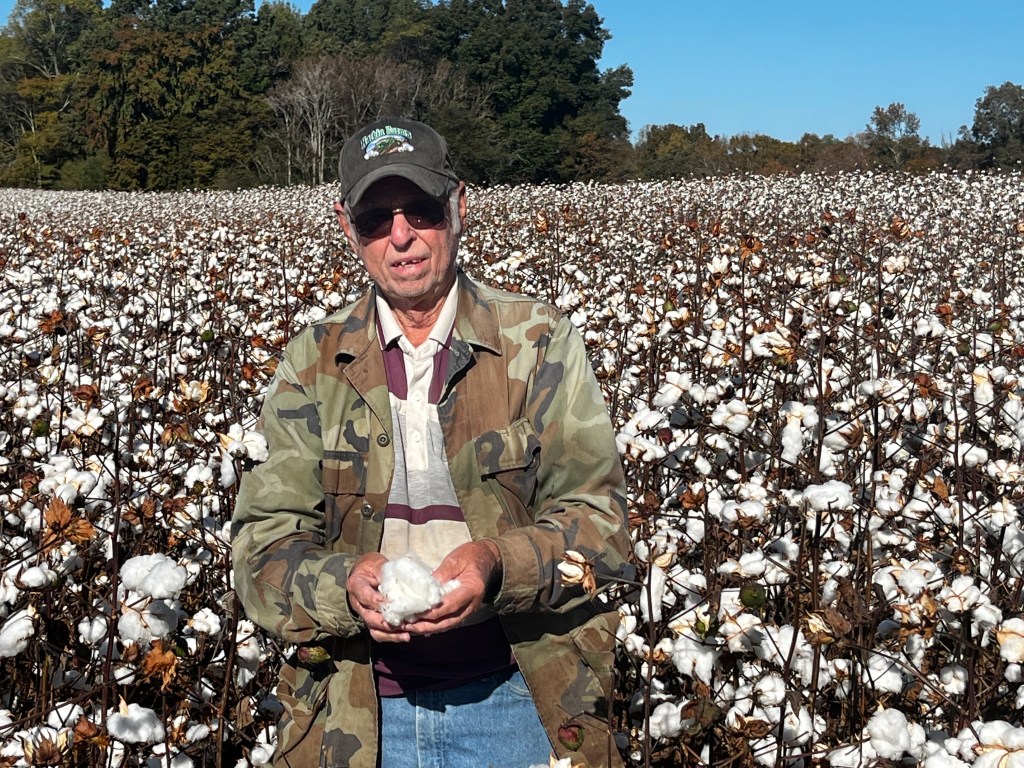Cotton is still king
Published 2:00 pm Thursday, October 20, 2022

- Pap 3
“Cotton is still king.”
That’s what Bobby “Pap” Johnson wants people to know about the crop that surrounds his home in the western part of Limestone County.
Trending
Pap, who got his nickname from his uncle as a young boy, retired from farming his land himself and now contracts with Harbin Farms of Athens.
“I don’t know about my great-grandfather, but my grandfather bought this land in 1942. Then daddy. I am the third generation to farm. We had mules we used, and in about 1948, we got our first used tractor,” Pap said. “When my granddaddy died, daddy bought the place. Daddy farmed it for a while but not very long. After I bought it, I quit farming and started ranching. Granddaddy bought this 120 acres for $2,400 and paid for it by raising cotton.”
“Back then, they didn’t put fertilizer under the cotton like they do now. Daddy and them probably wouldn’t put 100 pound on an acre. Now, they put 300-400 pound on an acre. That’s why it’s so big and pretty. Today, they put more in it, but we didn’t have the money to put in it back then. Daddy had to go to the bank and borrow the money every year to make a crop. He’d go to Anniston Farmer’s Bank and he would borrow the money, and that fall, he’d go back down there and pay it back,” Pap explained.
After paying back the bank, Pap’s family had enough left over to make it through winter.
“Farmers had a rough life. It was a good life in that it kept everyone together and everyone worked. It taught us a lot about how to work. It was a way of life back then in the ‘40’s and ‘50’s,” he said.
Pap’s 120 acres of farmland have been in the family for 80 years. Pap started picking cotton when he was about five and his mother made him an old towsack. He said that it would take from early September until Christmas to hand-pick the same amount of cotton that today’s six-row pickers can gather in one day.
Trending
“When I was younger, the cotton wouldn’t get but about knee high. The cotton we used to pick didn’t come out of the boll that good. They called it goose-picking. But, this cotton right here, it just comes out so easy. We could have stood up to pick this cotton,” Pap said.
Once Pap purchased the land, he turned to ranching instead of farming. Today, Pap contracts his land to Harbin Farms.
“Manmade fiber really hurt cotton because they could make so much more of it and make it when they wanted to. Cotton is only a seasonal thing and you pick it every fall,” he said. “After I sold my cows, I rented it out and they planted soybeans on this place. I saw that cotton was beginning to make a comeback, so I knew that Harbin was a cotton farmer. That’s all he farmed, so I got him to come over here, plant it, and work it for me. This is the fourth year and this is the best crop, this year, that we’ve had.”
Pap continued, “A farmer needs good weather. Weather controls a farmer. Harbin didn’t get to plant this year until May 11, and you are supposed to have cotton planted before May. It was wet and he couldn’t get in here and we had a cool spring. It’s a little bit late, but it’s still good cotton and I think we are going to make more yield out of it this year that its ever done.”
Pap has no interest in selling his land or allowing it to be developed. He has watched as farmland on the east side of the county has dwindled.
“There’s a lot of farmland that’s become subdivisions now. A farmer is the backbone of the nation. They feed us, they clothe us, and they shelter us. With the timber and the cotton and the soybeans that we raise, that feeds the nation. The United States feeds a lot of countries, and if we didn’t have other countries buying our commodities, we couldn’t make it in the United States,” he said.
Over eight decades, Pap has seen the many ways the farming industry has evolved. Pap estimates that, this year, each acre of cotton will yield two and a half bales compared to the 1-2 bales of the past.
“If we could get one bale an acre, back then, we were doing good. Farming has gotten so big and changed so much since I was farming. We had a two-row tractor, and now, they plant twelve rows at a time. They have so much bigger equipment today. They can do so much more with what they have today.
“Chemicals have also made a huge impact on cotton farming. Boll weevils have been eradicated. Roundup Ready seed has allowed for spraying for weeds and other invasive plants without causing damage to the cotton. The chemists and the engineers have come a long way in farming,” Pap said.
As for the future of cotton farming in Limestone County, Pap is confident. “Cotton is still king. Cotton farmers are still trying to keep us in some clothes to wear. Cotton fabric is making a comeback, because it is so much more comfortable. They are working on keeping cotton from wrinkling. That was the only downfall of cotton.”





